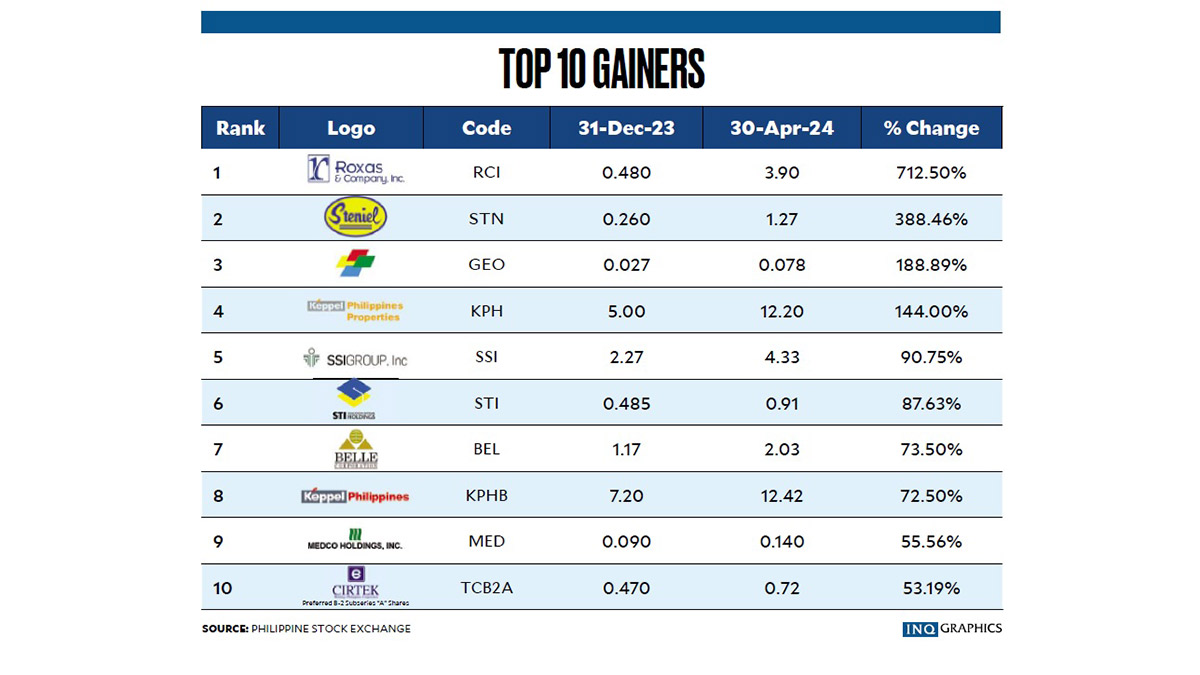
However, as is the case every year, this early momentum is starting to fade and the market is once again facing downward pressure, seemingly leaning towards another year of losses.
If we look at the performance of benchmark indexes over the past four years, the stock market has consistently finished negative every year despite a strong start.
For example, in 2020, the PSEi spiked in the first week of January, rising 1%, but finished the year down 8.7% due to the impact of the COVID-19 crisis. 2021 started well in January, rising 4% in the first two weeks, but then fell back, finishing the year down 0.2%.
In 2022, rising market optimism and the economy reopening led the PSEi to finish January up 1.8%. Despite this strong start, it ended the year down 7.8%. Last year, the PSEi started off with a strong 7.4% gain but ended the year down 1.8%.
Risk of a Down Cycle
Following this historical trend, and also taking into account the emerging risks of a market downcycle, investors are advised to be more cautious with their portfolios.
read: Investing in the Philippine Stock Exchange
This pattern of initial gains followed by subsequent declines suggests a more conservative investment approach with an emphasis on diversification and risk management is needed.
The market downturn could be due to a number of factors, one of which is the growing risk of geopolitical conflict, which if escalates could trigger broader economic turmoil, including a slowdown in international trade, rising energy costs and international tensions.
Such turmoil could negatively impact the economic outlook and shift investor sentiment away from riskier assets such as stocks and towards safer assets such as bonds.
Currency fluctuations due to economic uncertainty can also have a significant impact on the Philippine stock market. Historically, there has been a long-term negative correlation between the peso and the stock market of about 26.5 percent, based on data since 2000. The strength of this relationship varies over time and can last anywhere from a few weeks to a few months, depending on market conditions.
Whether the peso is trending upwards or downwards, its negative correlation with stock prices can be as high as 82 percent, but if the peso is stable, the correlation can drop to as low as 6.5 percent.
read: The peso fell to 58 to the dollar.
During these volatile times, with the peso falling to as low as 58 pesos against the dollar, it is expected that the stock market will be highly sensitive to fluctuations in the value of the peso.
Exchange rate fluctuation period
The risk of currency instability and a weaker peso could prompt the Bangko Sentral ng Pilipinas to further raise interest rates to combat speculative currency trading and the possibility of higher inflation. In anticipation of this scenario, the yield on the 10-year Philippine government bond has risen in one month from 6.33% to 7.04%.
This could result in higher interest rates and increased financial risks in the market. The ratio of total debt to market capitalization of companies listed on the PSE has been increasing year by year. During the 2007 financial crisis, this ratio was only 12 percent.
Debt vs. Total Market Cap
Over the years, the PSE’s total debt-to-total market capitalization ratio grew to 34.7% in 2017 and accelerated to 50.2% just before the pandemic hit at the end of 2019. It is now estimated to be at 63.2%.
While many stocks, especially blue chip stocks, have fallen to historically low levels, there is no guarantee that the stock market will not fall further. Given the historical performance of the PSEi’s Buffett Index, it is very likely that the market will remain “undervalued” for an extended period of time.
According to the Buffett indicator, the stock market is considered undervalued when its market capitalization to GDP ratio is below 75%. Conversely, the stock market is likely overvalued when this ratio is above 90%.
However, market history shows that a Buffett Index above 90% does not necessarily mean that the stock market is “overvalued” and will begin to decline. Rather, a high Buffett Index can keep the stock market “overvalued.”

